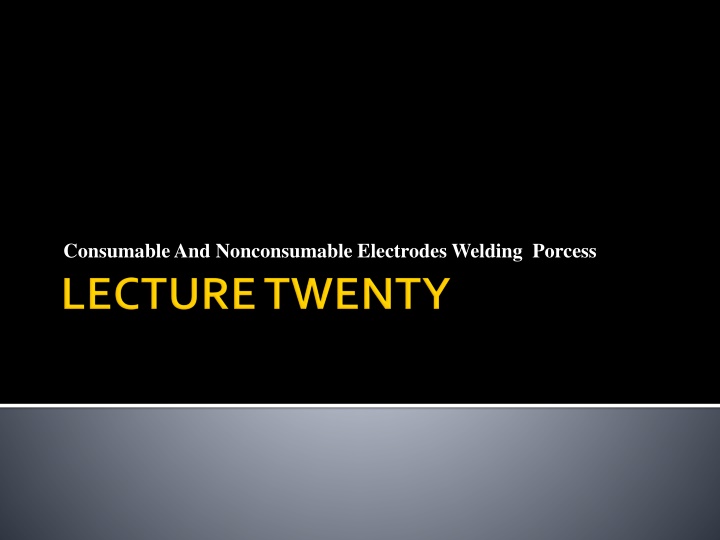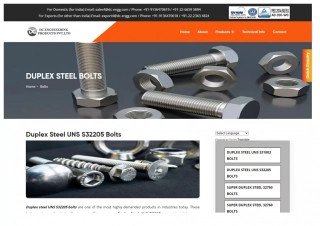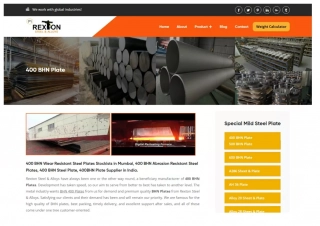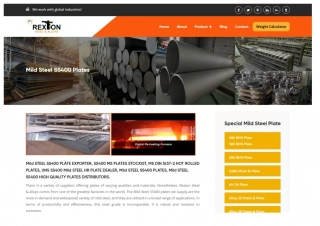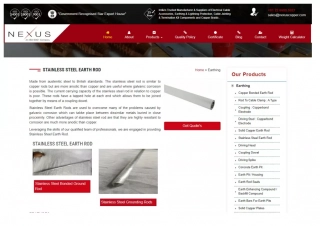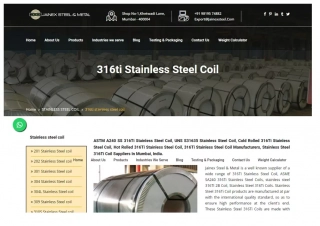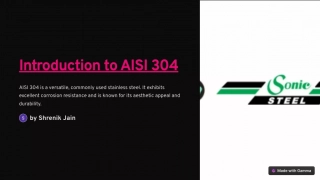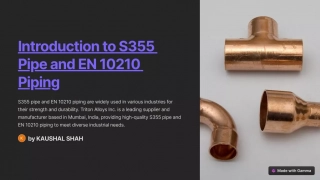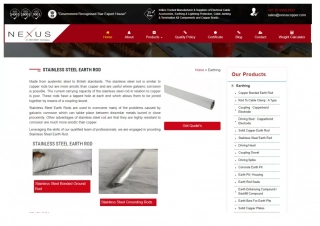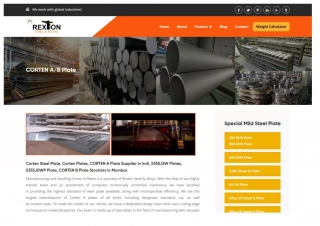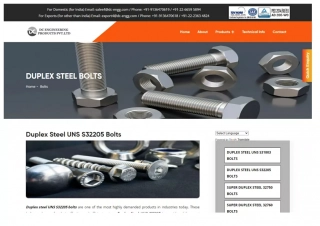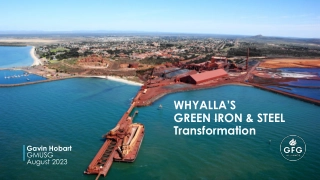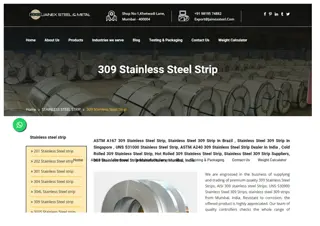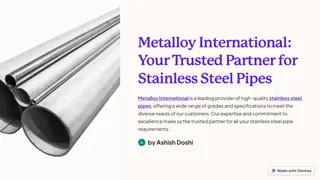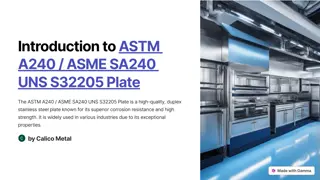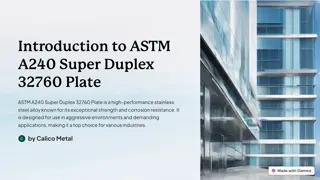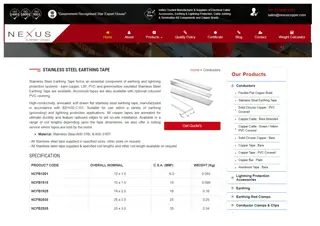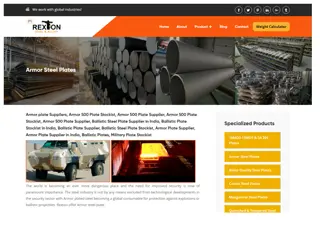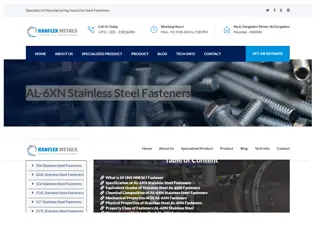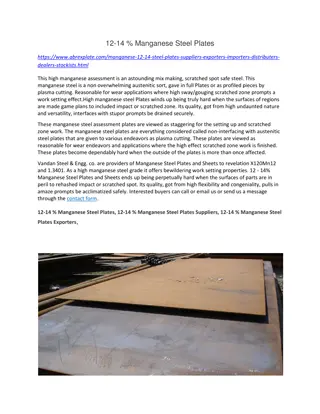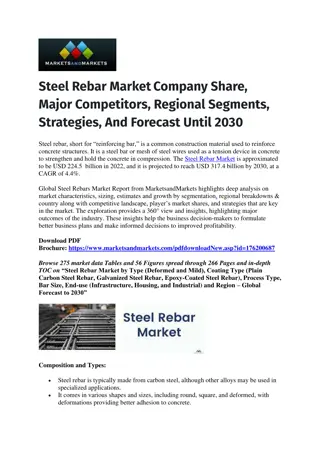Transforming Communities with Structural Steel Fabrication
Specialist fabricators of heavy and complex structural steel, we collaborate to build structures that benefit Australians. Gain a bidding edge in infrastructure projects by partnering with us for Early Contractor Involvement. With a focus on sustainable partnerships and operational excellence, we are a financially solid, innovative, and customer-centric business poised for growth.
Download Presentation

Please find below an Image/Link to download the presentation.
The content on the website is provided AS IS for your information and personal use only. It may not be sold, licensed, or shared on other websites without obtaining consent from the author.If you encounter any issues during the download, it is possible that the publisher has removed the file from their server.
You are allowed to download the files provided on this website for personal or commercial use, subject to the condition that they are used lawfully. All files are the property of their respective owners.
The content on the website is provided AS IS for your information and personal use only. It may not be sold, licensed, or shared on other websites without obtaining consent from the author.
E N D
Presentation Transcript
Gas metal arc welding (GMAW) is an AW process in which the electrode is a consumable bare metal wire, and shielding is accomplished by flooding the arc with a gas. The bare wire is fed continuously and automatically from a spool through the welding gun, as illustrated in Figure 20 .1 Figure 20.1 GMAW
Wire diameters ranging from 0.8 to 6.5mm (1/321/4 in) are used in GMAW, the size depending on the thickness of the parts being joined and the desired deposition rate. Gases used for shielding include inert gases such as argon and helium, and active gases such as carbon dioxide. Selection of gases (and mixtures of gases) depends on the metal being welded, as well as other factors. Inert gases are used for welding aluminum alloys and stainless steels, while CO2is commonly used for welding low and medium carbon steels. The combination of bare electrode wire and shielding gases eliminates the slag covering on the weld bead and thus precludes the need for manual grinding and cleaning of the slag. The GMAW process is therefore ideal for making multiple welding passes on the same joint.
The various metals on which GMAW is used and the variations of the process itself have given rise to a variety of names for gas metal arc welding. When the process was first introduced in the late 1940s, it was applied to the welding of aluminum using inert gas (argon) for arc shielding. The name applied to this process was MIG welding (for metal inert gas welding).When the same welding process was applied to steel, it was found that inert gases were expensive and CO2was used as a substitute. Hence the term CO2welding was applied. Refinements in GMAW for steel welding have led to the use of gas mixtures, including CO2and argon, and even oxygen and argon.
GMAW is widely used in fabrication operations in factories for welding a variety of ferrous and nonferrous metals. Because it uses continuous weld wire rather than welding sticks, it has a significant advantage over SMAW in terms of arc time (arc time (also called arc-on time) the proportion of hours worked that arc welding is being accomplished) when performed manually. For the same reason, it also lends itself to automation of arc welding. The electrode stubs remaining after stick welding also wastes filler metal, so the utilization of electrode material is higher with GMAW. Other features of GMAW include elimination of slag removal (since no flux is used), higher deposition rates than SMAW, and good versatility.
Gas tungsten arc welding (GTAW) is an AW process that uses a Nonconsumable tungsten electrode and an inert gas for arc shielding. The term TIG welding (tungsten inert gas welding) is often applied to this process (in Europe, WIG welding is the term the chemical symbol for tungsten is W, for Wolfram). GTAW can be implemented with or without a filler metal. Figure 20.2 illustrates the latter case. Figure 20.2
When a filler metal issued, it is added to the weld pool from a separate rod or wire, being melted by the heat of the arc rather than transferred across the arc as in the consumable electrode AW processes. Tungsten is a good electrode material due to its high melting point of 3410 C (6170 F). Typical shielding gases include argon, helium, or a mixture of these gas elements. GTAW is applicable to nearly all metals in a wide range of stock thicknesses .It can also be used for joining various combinations of dissimilar metals. Its most common applications are for aluminum and stainless steel. Cast irons, wrought irons, and of course tungsten are difficult to weld by GTAW.
In steel welding applications, GTAW is generally slower and more costly than the consumable electrode AW processes, except when thin sections are involved and very-high-quality welds are required. When thin sheets are TIG welded to close tolerances, filler metal is usually not added. The process can be performed manually or by machine and automated methods for all joint types. Advantages of GTAW in the applications to which it is suited include high-quality welds, no weld spatter because no filler metal is transferred across the arc, and little or no postweld cleaning because no flux is used.
Example: A GTAW operation is performed on low carbon steel, whose unit melting energy is 10.3 J/mm3. The welding voltage is 22 volts and the current is 135 amps. The heat transfer factor is 0.7 and the melting factor is 0.65. If filler metal wire of 3.5 mm diameter is added to the operation, the final weld bead is composed of 60% volume of filler and 40% volume base metal. If the travel speed in the operation is 5 mm/sec, determine (a) cross-sectional area of the weld bead, and (b) the feed rate (mm/sec) at which the filler wire must be supplied.
